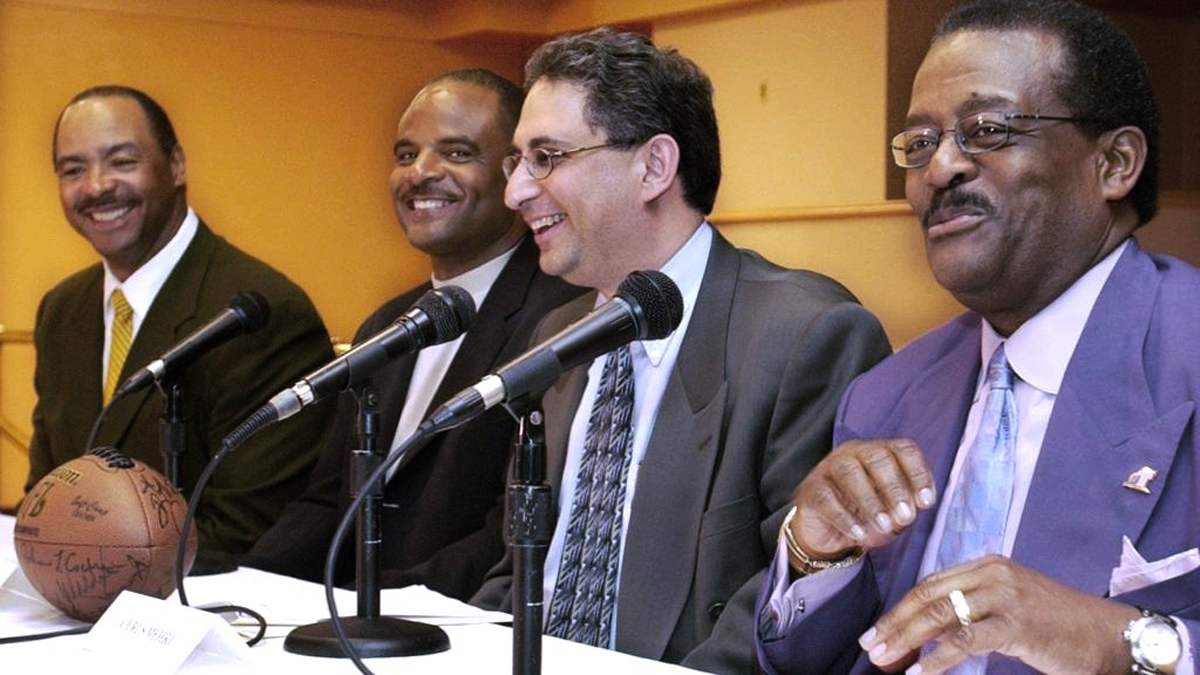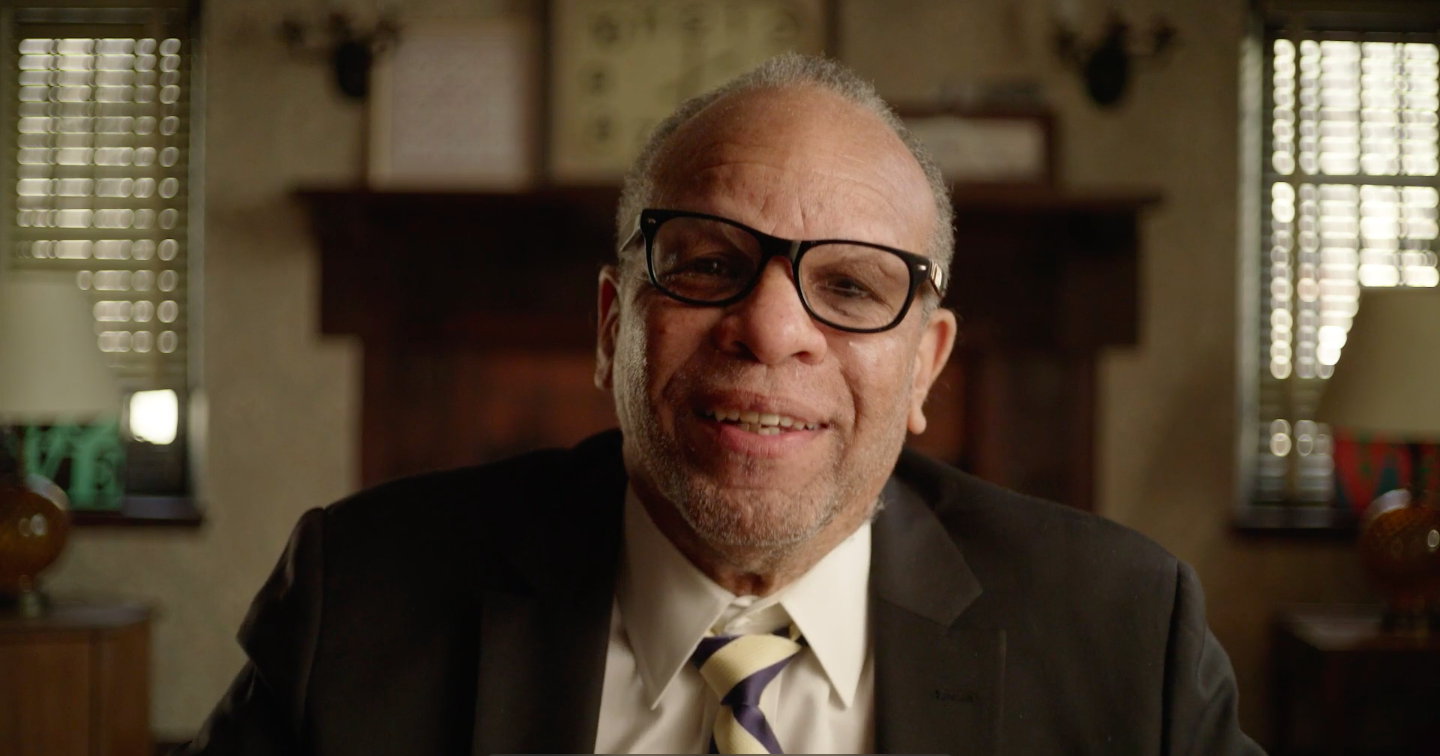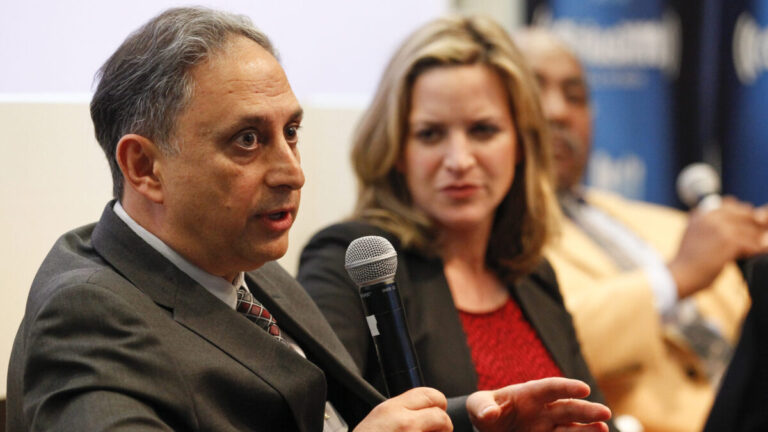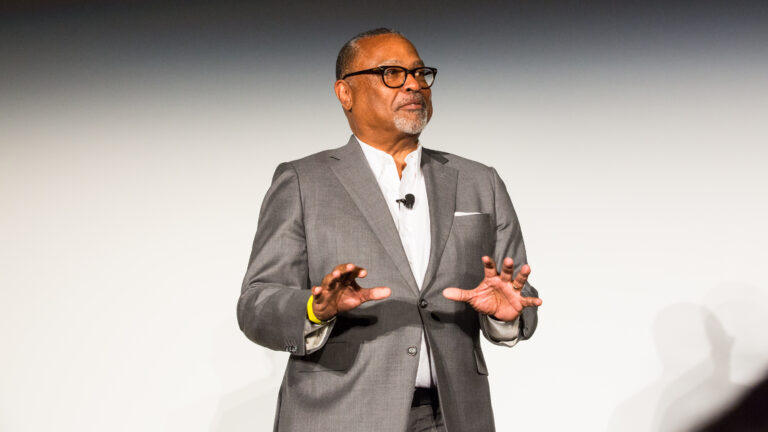The True Origins of the Rooney Rule: Part 1
Why this matters
Karen Given, former host of NPR's Only A Game, brings together Cyrus Mehri, Johnnie Cochran Jr., John Wooten, Jim Rooney, Jeremi Duru, and Karen Gallagher to discuss the creation and legacy of the Rooney Rule.
When Tony Dungy and Dennis Green were fired from their NFL head coaching positions despite leading their respective teams to multiple playoffs, civil rights attorney Cyrus Mehri and criminal lawyer Johnnie Cochran Jr. decided to take action. They commissioned a report from Dr. Janice Madden, who found that Black coaches won 1.1 more games per season, were more likely to take their teams to the playoffs, and continuously outperformed their White counterparts.“Their winning percentage was higher in part because the standard they were held to was so much higher than White coaches,” says Karen Gallagher, Senior Researcher for the Global Sport Institute. “And then despite that they weren’t being hired at the same rates, they weren’t being given second opportunities.”
After presenting these findings at a press conference, Mehri and Cochran caught the attention of John Wooten, a former NFL player who became the highest-ranking African-American front office executive in the league. Throughout his administrative career, he lobbied and advocated for diversity. He formed a partnership with the lawyers and pointed them towards Dan Rooney, the then-owner of the Pittsburgh Steelers.
Dan Rooney was well-known for his efforts to foster diversity in the NFL. He collaborated with Bill Nunn, a reporter for the Philadelphia Courier, to draft athletes from HBCUs. In the 60s, the Steelers had drafted more players for HBCUs than any other team and went on to win four Super Bowls. After asking then-commissioner Paul Tagliabue to put pressure on owners to ensure diversity in their teams, he became the chair of the league’s Diversity Committee.
In 2002, Rooney brought the owners together to vote on and implement what would be known as the Rooney Rule, which required that every club needed to interview at least one candidate of Color in their searches for a head coach.

From left to right: Former NFL players Kellen Winslow Sr. and Warren Moon along with lawyers Cyrus Mehri and Johnnie L. Cochran Jr., who worked together to establish the NFL’s Rooney Rule. Courtesy of the Los Angeles Sentinel.
The rule was promising. One of the first coaches hired after the implementation of this rule, Marvin Lewis, took the Cincinnati Bengals to several playoffs and had an incredibly successful head coaching career. “The Bengals, implementing the rule and taking it seriously, worked to their benefit. They gained a competitive advantage,” says Jeremi Duru, author of Advancing the Ball.
However, violations of the rule were a cause for concern and indicated major loopholes in the rule. Upon hearing the result of the vote on the Rooney Rule, Mehri says, “Johnnie and I put out a statement that very day applauding them, but saying there are two key things, implementation, and enforcement. What I didn't know was how quickly they would blow off this rule.”
Jerry Jones interviewed Bill Parcells for two days, but only interviewed Dennis Green for 20 minutes over the phone. The general manager of the Lions, Matt Millen, invited Black candidates to show them the facilities in Detroit after telling them he was going to hire Steve Mariucci anyway.
Wooten, Cyrus, and Cochran realized that in order for owners to be held accountable and for the Rooney Rule to be implemented correctly, they needed to form a coalition. They invited African American coaches, scouts, and executives to join them for a meeting during the NFL Combine. They were overwhelmed by the number of people who showed up.
“Lemme tell you, it is the same feeling I got when Obama was nominated and it was the same feeling that I got the other day when I saw Biden and Harris,” says Wooten. “You know, it's a feeling that everything that you believe in has happened.”
“There was desperation. There were tears. There were people who talked about humiliations they'd suffered as they tried again and again to get opportunities that other folks who weren't black were getting. There was also some hope,” says Duru.
The meeting resulted in the formation of the Fritz Pollard Alliance, an organization of coaches, executives, and scouts committed to diversity, opportunity, and holding the NFL accountable. John Wooten was their first chairman.
Gallagher notes that over the last 18 seasons, only 0-3 African American coaches have been hired per season, and the percentage of representation has been “pretty invariable.” However, with heightened scrutiny on the league following several controversies and Black Lives Matter protests, the calls for equity and change are louder than ever.
Wooten states, “We as a nation of people have seen this country grow. You're not old enough, but I'm old enough to have known, I grew up in segregation, I know what it means, I've been a part of it. But we know that the nation can overcome this. And football is an intricate part of that.”
Monthly Issue
How the NFL Moves Forward
18 years after the inception of the Rooney Rule, data shows a lack of forward progress when it comes to diversity at the highest levels of leadership in the NFL.
What actions are necessary to move the chains on safety, equity, and inclusion in the league?






